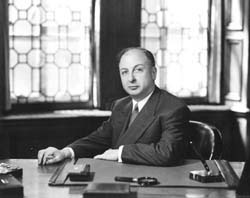| Look up Seagram in Wiktionary, the free dictionary. |
Seagram was a Canadian alcoholic beverages company.
Contents
Seagram or Seagram's or variation, may also refer to:
| Look up Seagram in Wiktionary, the free dictionary. |
Seagram was a Canadian alcoholic beverages company.
Seagram or Seagram's or variation, may also refer to:
| Search for "Seagram" , "Seagrams" , or "Seagram's" on Wikipedia. |

Canadian whisky is a type of whisky produced in Canada. Most Canadian whiskies are blended multi-grain liquors containing a large percentage of corn spirits, and are typically lighter and smoother than other whisky styles. When Canadian distillers began adding small amounts of highly-flavourful rye grain to their mashes, people began demanding this new rye-flavoured whisky, referring to it simply as "rye". Today, as for the past two centuries, the terms "rye whisky" and "Canadian whisky" are used interchangeably in Canada and refer to exactly the same product, which generally is made with only a small amount of rye grain.
Waterloo most commonly refers to:
Bond or bonds may refer to:
Lexington may refer to:

The Seagram Company Ltd. was a Canadian multinational conglomerate formerly headquartered in Montreal, Quebec. Originally a distiller of Canadian whisky based in Waterloo, Ontario, it was once the largest owner of alcoholic beverage lines in the world.
Leland may refer to:
Kelso may refer to:

Events from the year 1841 in Canada.

Samuel Bronfman, was a Canadian businessman and philanthropist. He founded Distillers Corporation Limited, and is a member of the Canadian Bronfman family.

The Seagram Museum was a museum in Waterloo, Ontario, Canada, preserving the heritage of the once venerable Canadian distillery Seagram. Located at 57 Erb Street West, the museum operated from May 1984 to March 1997. Designed by architect Barton Myers, it was built at a cost of $4.75 million and its entrance was a renovated late-19th century rack warehouse from the Seagram plant. It had a variety of exhibits illustrating everyday life in the liquor distillery in the late 19th and early 20th century.

Crown Royal, also known as Seagram's Crown Royal, is a blended Canadian whisky brand created by Seagram and owned by Diageo since 2000. Production of Crown Royal is done at Gimli, Manitoba, while the blending and bottling of the whisky is done in a facility in Amherstburg, Ontario.
Joseph Emm Seagram was a Canadian distillery founder, politician, philanthropist, and major owner of thoroughbred racehorses.
Barak Thomas "Barry" Littlefield (June 16, 1871 – June 14, 1936 is an American-born Canadian Horse Racing Hall of Fame Thoroughbred racehorse trainer.
Lookout was an American Thoroughbred racehorse that is best known for winning the 1893 Kentucky Derby.
Belle Mahone was a Canadian Thoroughbred racehorse best known for winning the 1917 King's Plate, Canada's most prestigious race and North America's oldest annually run stakes race.
The Seagram's Distillery is a historic building complex in Louisville, Kentucky, on Seventh Street Road. It was originally constructed between 1933 and 1936 for the production of bourbon whiskey by Distillers Corporation Limited, who acquired Joseph E. Seagram & Sons in 1928. The Seagram company has since ceased operation, and its assets were acquired by other companies, notably The Coca-Cola Company, Diageo, and Pernod Ricard.

Edward Frowde Seagram was an entrepreneur, philanthropist and politician in Ontario, Canada. He served as mayor of Waterloo from 1906 to 1907.
George Randall was an American-born business owner and politician in Ontario, Canada. He served as reeve of Waterloo from 1870 to 1872 and as mayor in 1878.
William Henry "Bill" Bringloe was a trainer of Thoroughbred racehorses who was the 1927 Canadian and United States Champion trainer by earnings and a Canadian Horse Racing Hall of Fame inductee.
Sir Harry (1924-1930) was an American Thoroughbred racehorse owned by the Seagram family stables who won the 1927 Coffroth Handicap, the then richest race in North America with a purse of $100,000. Race conditioned by future Hall of Fame trainer William Bringloe and ridden by the highly regarded young jockey Ovila Bourassa, that same year Sir Harry ran second in the 1927 Preakness Stakes, the second leg of the U.S. Triple Crown series.